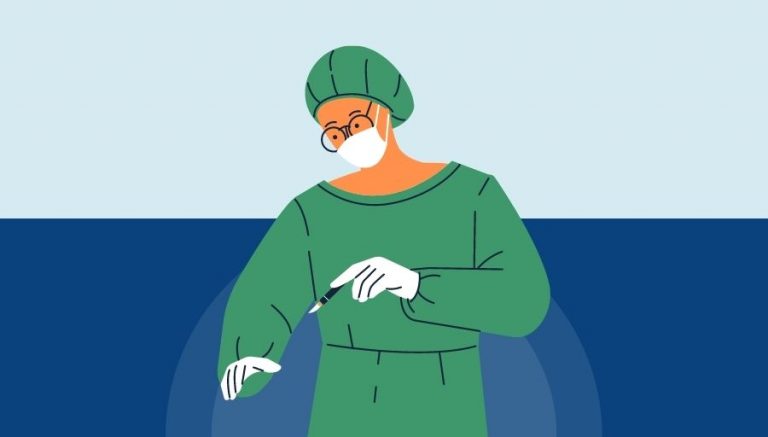How To Use CPT Code 51702
CPT 51702 refers to the insertion of a temporary indwelling bladder catheter, specifically a simple catheter such as a Foley. This article will cover the description, procedure, qualifying circumstances, appropriate usage, documentation requirements, billing guidelines, historical information, similar codes, and examples of CPT 51702 procedures.
1. What is CPT 51702?
CPT 51702 is a medical billing code used to describe the insertion of a temporary indwelling bladder catheter, specifically a simple catheter like a Foley. This code is used by medical professionals to accurately document and bill for this specific procedure, ensuring that the patient receives the appropriate care and that the provider is reimbursed accordingly.
2. 51702 CPT code description
The official description of CPT code 51702 is: “Insertion of temporary indwelling bladder catheter; simple (eg, Foley)”
3. Procedure
The procedure for CPT 51702 involves the following steps:
- The patient is prepped and draped in a sterile manner.
- The treatment area is cleaned and sterilized with antiseptic lotion.
- A Foley catheter is gently slid into the patient’s bladder via the urethra.
- The catheter is secured with the drainage bag below the bladder position.
- The catheter is used to either drain the patient’s urine freely from the bladder for collection or to inject liquids used for treatment/diagnosis of bladder conditions.
4. Qualifying circumstances
Patients who are eligible to receive CPT code 51702 services include those who:
- Are experiencing acute urinary retention.
- Require temporary indwelling catheterization for diagnostic or treatment purposes.
- Have a medical condition that prevents them from effectively emptying their bladder.
- Need assistance with bladder management due to a neurological condition or injury.
5. When to use CPT code 51702
It is appropriate to bill the 51702 CPT code when a patient presents with acute urinary retention or requires temporary indwelling catheterization for diagnostic or treatment purposes. This code should be used for simple catheter insertions, such as a Foley catheter, and not for more complex procedures that may require additional guidance or equipment.
6. Documentation requirements
To support a claim for CPT 51702, the following information should be documented:
- Patient’s medical history and current symptoms.
- Physical examination findings, including any relevant abnormalities.
- Indication for the catheter insertion, such as acute urinary retention or diagnostic purposes.
- Type of catheter used (e.g., Foley).
- Details of the procedure, including the sterile technique and any complications encountered.
- Outcome of the procedure, such as successful drainage of urine or administration of treatment.
7. Billing guidelines
When billing for CPT code 51702, it is important to follow the appropriate guidelines and rules to ensure accurate reimbursement. Some tips and codes that apply to CPT code 51702 include:
- Do not report CPT 51702 in conjunction with 0071T or 0072T.
- Ensure that the documentation supports the medical necessity of the procedure.
- Verify that the patient’s insurance plan covers the procedure and obtain any necessary pre-authorizations.
8. Historical information
CPT 51702 was added to the Current Procedural Terminology system on January 1, 2003. There have been no updates to the code since its addition.
9. Similar codes to CPT 51702
Five similar codes to CPT 51702 and how they differentiate from CPT 51702 are:
- CPT 51701: This code is used for the insertion of a non-indwelling bladder catheter, such as when measuring post-void residual urine.
- CPT 51703: This code is used when a guide is required for the insertion of a temporary indwelling bladder catheter due to difficulty or complications.
- CPT 51705: This code is for changing a suprapubic catheter, which is inserted through the abdominal wall rather than the urethra.
- CPT 51710: This code is used for the irrigation of the bladder for therapeutic or diagnostic purposes, without the insertion of a catheter.
- CPT 51720: This code is used for the instillation of a therapeutic agent into the bladder, such as medication or contrast material, without the insertion of a catheter.
10. Examples
Here are 10 detailed examples of CPT code 51702 procedures:
- A patient presents with acute urinary retention due to an enlarged prostate, and a Foley catheter is inserted to relieve the obstruction.
- A patient with a spinal cord injury requires a temporary indwelling catheter for bladder management.
- A patient undergoing surgery is given a Foley catheter to monitor urine output during the procedure.
- A patient with a neurogenic bladder requires a temporary indwelling catheter to assist with bladder emptying.
- A patient with a urinary tract infection is given a Foley catheter to facilitate the administration of intravesical antibiotics.
- A patient with bladder cancer requires a temporary indwelling catheter for the administration of chemotherapy directly into the bladder.
- A patient with urinary incontinence due to a neurological condition is given a temporary indwelling catheter for bladder management.
- A patient with a history of recurrent urinary tract infections requires a temporary indwelling catheter for diagnostic purposes, such as a cystogram.
- A patient with a urethral stricture requires a temporary indwelling catheter to bypass the obstruction and allow for normal urine flow.
- A patient with a pelvic fracture requires a temporary indwelling catheter to manage bladder function during the healing process.


